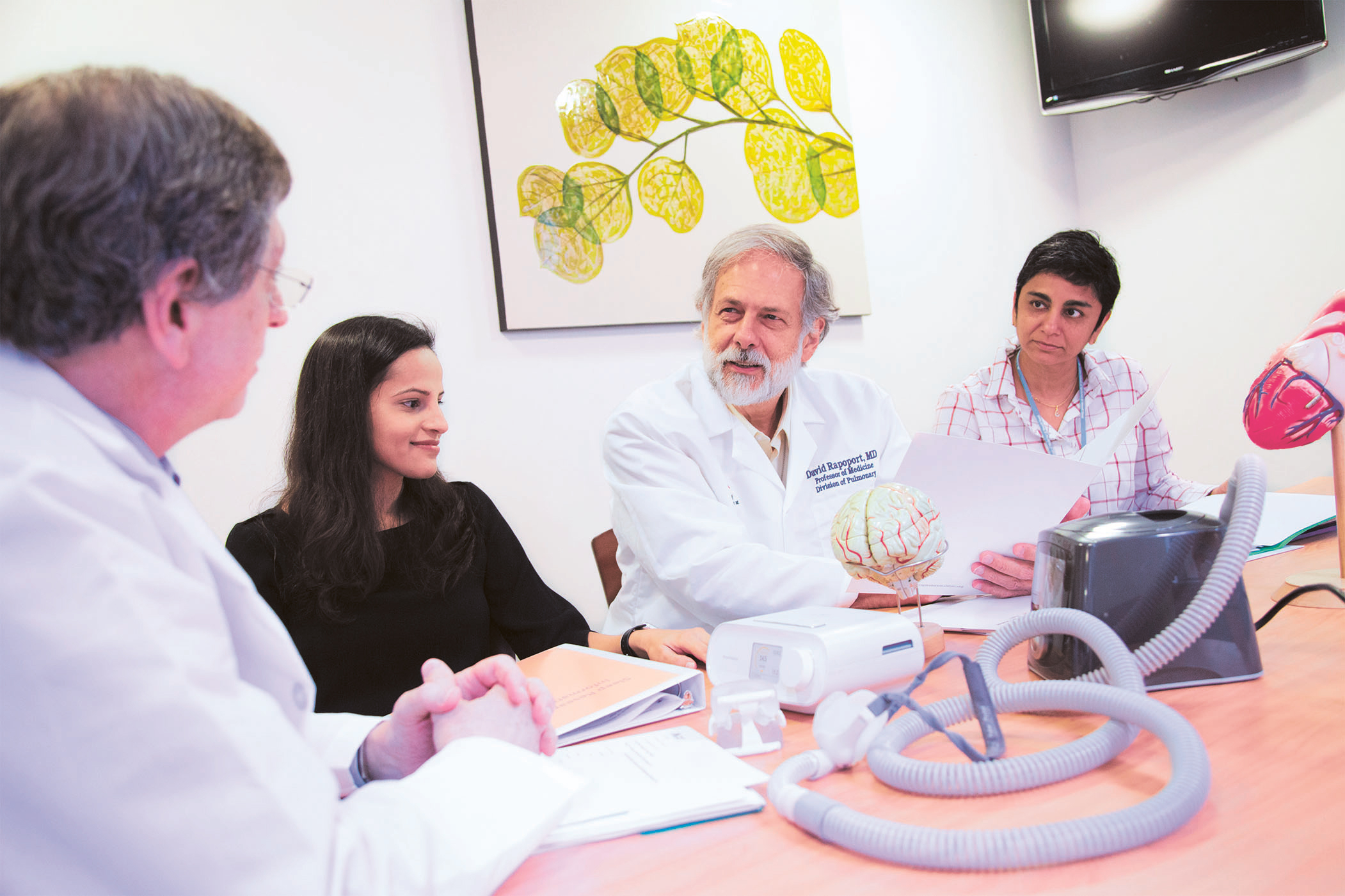The Science and Technology of Sound Sleep
-
-
MIT Technology Review
- 1
Filed Under
Recommended

Pandemic worries have kept many of us awake this year. But David Rapoport ’70 has long known a thing or two about not getting a good night’s sleep.
Rapoport is a leading expert in sleep medicine and the physiology of sleep-disordered breathing (sleep apnea and snoring). An estimated 10 percent to 15 percent of US adults have moderate to severe obstructive sleep apnea, when soft tissues in the upper airways repeatedly collapse, blocking breathing; waking up is the only relief. The cause is unknown, but it can lead to excessive fatigue, neurocognitive impairment, and cardiovascular problems, among other issues.
The most effective treatment is one co-developed by Rapoport: CPAP, short for “continuous positive airway pressure,” which delivers air pressure through a hose and mask to keep breathing passages open during sleep. After an Australian physician invented CPAP in 1980, Rapoport improved the circuitry and showed it worked for sleep apnea nearly 100% of the time. Yet patients who find CPAP cumbersome often opt for less effective treatments. Rapoport’s research now focuses on making the device more comfortable and effective, determining whom to treat, and improving patient training on how to wear it.
“The balance between how well a therapy works and patients’ willingness to use it continues to dominate research efforts,” says Rapoport, founder and president of the Foundation for Research in Sleep Disorders. He is a professor at Mount Sinai’s Icahn School of Medicine in New York City and its Sleep Medicine Research Program director.
The balance between how well a therapy works and patients’ willingness to use it continues to dominate research efforts.
Rapoport also served as an investigator with the 1995–2005 Sleep Heart Health Study, the largest epidemiological study of its kind. Researchers linked sleep-disordered breathing to an increased risk of high blood pressure, heart failure, and stroke.
Most recently, his work with New Zealand’s Fisher & Paykel Healthcare led to CPAP changes such as the ability to detect awakenings from breathing patterns and automatically relieve pressure. Early in the Covid-19 pandemic, Rapoport also co-developed a Mount Sinai protocol for converting bilevel CPAPs into makeshift ventilators for less severely ill patients, if needed.
The strategy of reducing problems to manageable parts lies at the heart of all research, Rapoport says. He recalls an assignment from late MIT physics professor Anthony French asking students to estimate the number of blades of grass in Killian Court. “That lesson is emblematic of the things that I learned at MIT,” he says. “The absolute beauty of what you can do on the back of an envelope, and then how to turn an idea into an experiment or an invention.”
Pamela Ferdinand is a 2003–04 MIT Knight Science Journalism Fellow.
This article also appears in the November/December 2020 issue of MIT News magazine, published by MIT Technology Review.
Photo (top): Members of the Mount Sinai Integrative Sleep Center team including Rapoport, second from right. Courtesy of Mount Sinai.








Comments
Anne Williams
Sat, 12/12/2020 7:49am
reducing problems to manageable parts
You remind me of my childhood piano lessons. When I advanced from easy pieces to real music, the lessons focused on breaking down each piece into its many parts then working them all together to create a whole. I was amazed at how much easier it was to do something well when that method was employed, and found myself applying it to other situations. It still amazes me 67 years later.